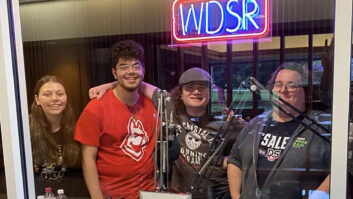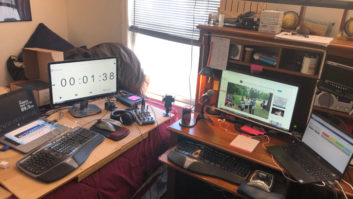The author is director of production for KISW.
The setup and load-in on Nov. 15 (the day prior to the event), took about five hours. That encompassed wiring, blocking, testing, loading in the back line for the bands and doing some modest sound checks. The team from the sound company was about 20 strong in setup.
On Thursday, Nov. 16, this was our plan: The front-of-house engineer handled stage monitors for the bands. We had a broadcast mix by the station engineer who was assisted by a live monitor engineer.
Here are some of the other categories of people we worked with: a lighting tech, a show/stage director, music director and a voice-over producer who kept voice talent on time and where they needed to be.
We used three producers who served as runners to get guests on and off the stage throughout the day and three stagehands to handle moving equipment to and from the stage seamlessly.
Taking a production like this offsite and putting it in front of a live audience is perilous. We anticipated roughly 30 audio inputs would be needed and so we worked with a 48-channel console. By the time the show rolled around, we went from 30 inputs to 43.
[Related: “KISW’s Live Day: No Safety Net Here!” ]
Here is a basic list of our equipment: six broadcast table mics, three Foley mics, four voice-over mics, three vocal mics for the cover bands, two vocal mics for the bumper band, five mics for amps, six mics on the drum kit and two condenser mics for room ambiance, which we didn’t need. The room was very live.
The mix was the toughest thing to balance. We were mixing for a large room and audience and mixing for a broadcast while getting feedback from listeners, producers and managers throughout the day to refine what we were sending out to the masses. That’s always the biggest challenge.
Keeping a lock on all those open channels was tough. We were constantly adjusting monitors for the bands. In hindsight, we needed to cage and baffle the drums. No matter what you do when you take something this massive offsite for the first time, you don’t know what you don’t know until you do it. It’s safe to say we have reams of notes for improvements for the next time around.
It was the ultimate high wire act, that’s for sure. But fun? Without a doubt.
Read more about the background of this annual event in a long-form article written by Ken Deutsch.












